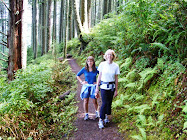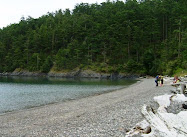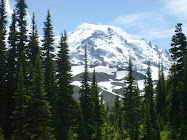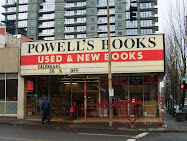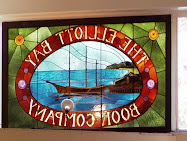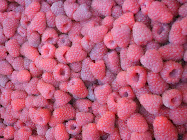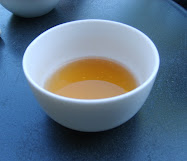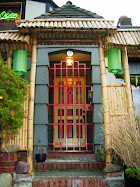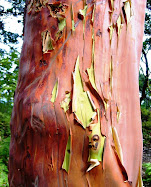 |
| Sol Duc Falls (all photos by Steve Nelson) |
Today's guest post is by my friend Betty, who recently spent several days camping near Sol Doc Hot Springs in Washington's Olympic National Park. This is the locale of my first week-long backpacking trip as a teen, so it's an area near and dear to me, and fabulous place to visit.
Mushrooms growing on trees. A big waterfall. Tall stately trees with moss hanging from branches. Brown
pelicans and eagles overhead. Sea stars and anemones in the water.
Our recent trip to Washington's Olympic National Park offered stimuli for the senses and solace for the soul.
And we also enjoyed a soak in hot spring pools with people from around the
world.
We rolled into Sol Duc valley campground on Wednesday afternoon before Labor Day weekend
and found a site with a decent-sized flat spot for a tent, picnic table, and
fire grate. A little drizzle caused us to be blue tarp campers for a day. Fortunately, the light rain ended
that night.
Some of the heaviest rainfall on the planet here on the western side of the Olympic Mountains makes the Sol Duc River valley, in the northwest edge
of the park, green and lush. It’s a wonderful
place to visit during the wet season (three-quarters of the year) but easier to camp during the dry summer.
The next day we headed to the trailhead at the end of the
road, where backcountry trips to Seven Lakes Basin
often start. With almond butter/ jam/fresh strawberry sandwiches (fresh strawberries make an almond
butter and jam sandwich quite delicious) and all the other essentials in our packs, we hiked to the main attraction,
less than a mile up the trail: Sol Duc
Falls.
We joined the admiring throng of people for a few minutes at the waterfalls,
then turned right after the bridge and resumed our trek to Deer Lake,
about 3 miles up the trail. The crowds dissipated and the
trail turned rocky, with careful footing required. Mushrooms and tall trees with moss-covered branches entranced us on this trail that roughly
follows the course of Canyon Creek.
 |
| Deer Lake |
After a lunch break
at one of the backcountry camps on the way up, we reached Deer Lake, where we saw tents set up across the lake. At
the alpine lakeshore, we relaxed on a log before hiking back down to cook dinner at our campsite. Our evening treat was a $3 shower at
the Sol Duc Hot Springs Resort.
On Friday, the Hoh Rain Forest, about 2 hours drive from Sol Duc, and Rialto Beach
beckoned. At the small Hoh visitor center, we bought pocket guides on mushrooms and birds after enjoying the interesting
exhibits and helpful staff.
Two short nature trails (the Hall of Mosses and the Spruce
Nature Trail) offer easy interpretive hikes. We chose the mosses trail for
many wow moments looking at big trees, some swathed in club moss. This area
averages 142 inches of rain annually, which is almost four times that of Seattle.
 |
| Lots of 'shrooms in the Hoh Rainforest love all that rain. |
Back on Highway 101, we headed north through Forks
and then to Rialto
Beach, one of the many wild Pacific
Coast beaches within
Olympic National Park. At Rialto,
the parking lot is right next to the beach, so access is easy. Wind and temps
about 10 degrees cooler than inland prompted us to throw on a couple
layers before walking north along the beach.
 |
| Sea stack at Rialto Beach |
Within minutes we saw two bald eagles and
flocks of big birds. After a few minutes of gazing through binoculars, we realized they were brown pelicans; seeing them was
quite a treat.
 |
| Brown pelicans off Rialto Beach |
The tide was going out for another couple of
hours, so we had plenty of time to check out the tide pools at Hole in the Wall, a rock
formation passable only during low tide. A few parties were carrying backpacks
and containers of water for a weekend of camping among the drift logs. (Fresh
water is not available here.)
 |
| Sea star and anenomes Hole in the Wall tidepool |
In the early evening, the clouds lifted again, and we warmed up in the waning sun that cast a dusky evening glow.
With sunset coming soon, we enjoyed a picnic dinner of
crackers, salami, goat brie, tapenade, and fruit (hmmmm) at the beach and caught the
last sunlight before returning to Sol Duc for the night.
 |
| Sunset over the Pacific at Rialto Beach |
|
On our last full day, we found it easy to stay close to camp. The short trail
near our campsite offered beautiful tall
trees, mushrooms, and a view of the Sol
Duc River.
We finally had time to soak in the Sol Duc Resort hot
springs pools late in the afternoon. This popular
resort was crowded over the holiday weekend, but we found
a seat and relaxed. Then, back to camp,
dinner, and a campfire for our last night at Sol Duc.
When You Go
Here is a map of Olympic National Park that shows the places described in this post. Any time of year is a good time to explore the Olympic National Park lowlands and beaches, but be prepared for plenty of rain and storms from fall through spring. September is a great time to go before the weather turns in earnest. (Like now. This week. Weather is supposed to stay sunny and dry. Hop in your car and drive west!) Click here for campground information.



























